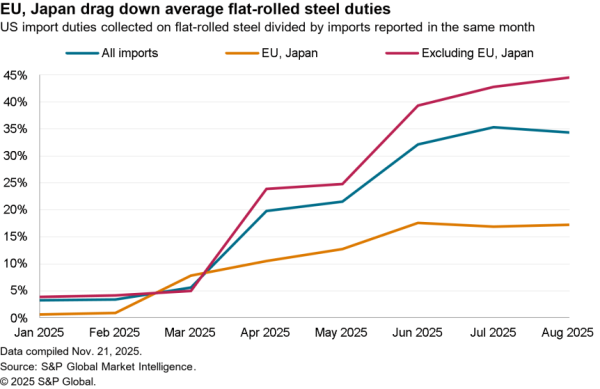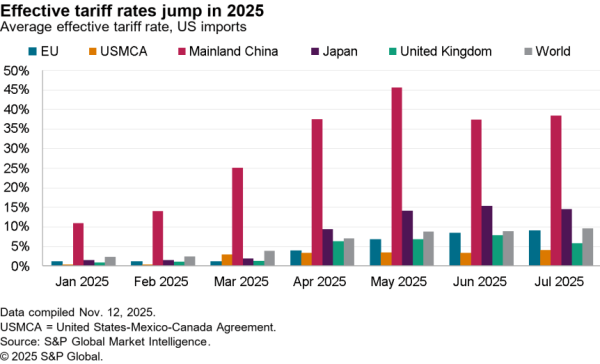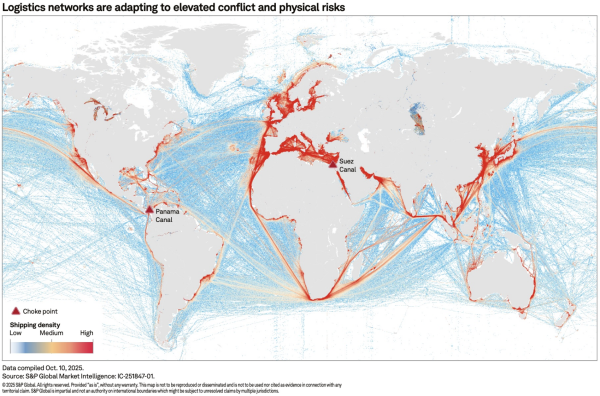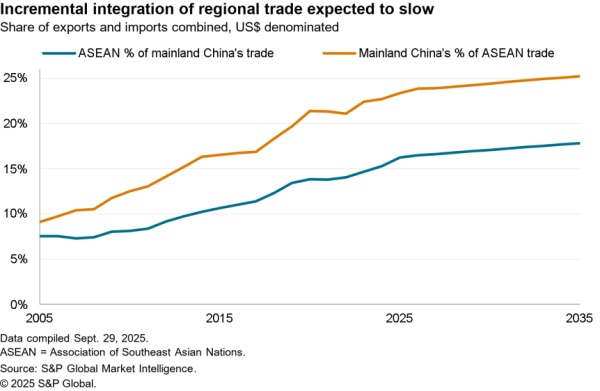Defunct container-line Hanjin Shipping filed for bankruptcy on August 31 2016, and was finally wound up in February, as outlined in Panjiva research of February 17. Since then the container-line industry broadly has steadily improved in terms of pricing, volumes and financials.
Hanjin’s failure was not quick in coming. It had experienced year-over-year revenue growth for 13 straight quarters until 2Q 2016 (its last full quarter of operations), Panjiva analysis of company financial data shows. That meant its ability to pay interest on debt dropped, with the ratio of EBITDA to interest expense falling from a peak of 2.9x in the first quarter of 2015 to minus 2.0x (ie uncovered) in the second quarter of 2016.

Source: Panjiva
Since Hanjin Shipping’s failure the container-line industry’s revenues have steadily recovered. Panjiva analysis of the most recent revenues of the top 14 liners shows revenues in the second quarter improved by 10.4% on a year earlier. That was the second quarter of annual improvements, and the fifth straight quarter of sequential growth (not adjusting for acquisitions or Hanjin Shipping’s demise). Notably Hyundai Merchant Marine actually took a step back in the second quarter – one of only three shippers to do so.

Source: Panjiva
The return to revenue growth has been driven in large part by improved shipping rates. That partly reflects continued demand growth – global trade expanded by 4.6% in June – as well as more pricing discipline following the creation of three big shipping alliances in April. As a consequence global shipping rates – based on the Shanghai Shipping Exchange CCF Index – are around 20% higher than they were at the end of August 2016. Rates to South Korea (Hanjin Shipping’s largest market) having jumped 30.1%. It’s not all plain sailing though, as rates have fallen during the current peak shipping season.

Source: Panjiva
With a handful of exceptions container traffic has improved globally. Traffic via 12 countries tracked by Panjiva increased by 8.6% on a year earlier in the second quarter of 2017. Only three countries (Taiwan, Peru and Uruguay) have experienced a downturn during that period. Notably volumes via China increased by 9.8%, and those through the U.S. by 8.1%.

Source: Panjiva
Consolidation in the sector has helped improve the outlook too. Fewer players should mean better pricing discipline and better pricing power, subject to regulatory approvals. Panjiva data shows the market share of the top 20 carriers operating on U.S.-bound lines increased by 4.82% points to 63.50% in the three months to July 31 compared to a year earlier. Once the current round of mergers is completed ( ONE in Japan, Maersk’s bid for Hamburg Sud and COSCO Shipping’s bid for Orient Overseas) the top 10 operators will hold a 56.0% share, with the top five alone holding 39.2%.
For reference Hanjin Shipping held a 3.1% market share in the three months to July 31 2016. Hyundai Merchant Marine has also sought to reduce the risk of the failure of other South Korean shippers via the Korean Shipping Alliance – though this will still be a small player and may need to engage with other, larger operators or alliances to succeed.

Source: Panjiva
The biggest shippers have increased their capacity globally. Panjiva analysis of Alphaliner data shows the top 30 shippers in 2017 have increased their capacity by 12.1% on a year earlier. That includes a 64.2% growth at Hapag-Lloyd (adding CSAV and UASC) and the emergence of SM Line as a new shipper.
Only a handful have contracted (including Hyundai Merchant Marine and Hamburg Sud), through a mixture of not replacing older capacity and foregoing chartered vessels). Capacity growth will continue – the top 30 have an aggregate 2.16 million TEUs of new capacity on order (equivalent to a shipper bigger than COSCO Shipping). That represents a slower pace of growth at 11.3% vs. 15.9% a year earlier.

Source: Panjiva
The failure of Hanjin Shipping, and the broader malaise in the shipping industry, led to significant action from the South Korean government. This included the 6.5 trillion won ($5.45 billion) investment in Korea Shipping, which has supported the shipbuilding industry primarily at this stage. That allowed South Korean shipbuilders to more than double their orders in the first half vs. the year earlier. Meanwhile revenues from exports in July were 87% higher vs. a year earlier, Panjiva analysis of official data from China, Japan and South Korea shows. That also mean the annual total breached $77 billion for the first time since November 2015.
The risk, of course, is that this support for the shipbuilding industry – alongside that likely from the Chinese government in response – will lead to a new round of low (financing) cost capacity construction. That in turn could result in an oversupply of vessels and a new round of troubles for the container-line industry.

Source: Panjiva




